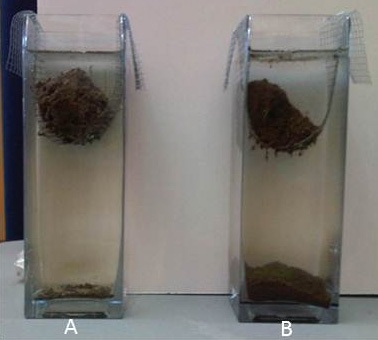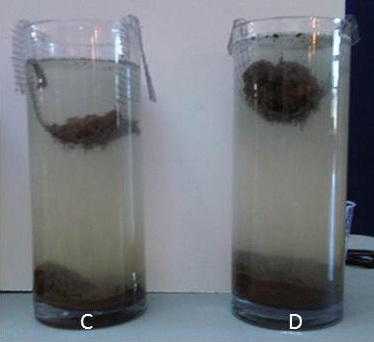Aggregate stability
Information on aggregate stability from different production and tillage systems. Aggregate stability depends on the type and amount of clay, organic matter and biological activity.
Soil aggregate stability describes how well soil particles hold together. Good aggregate stability means it resists falling apart from destructive forces such as water or wind erosion, and tillage.
Good soil quality is usually associated with good aggregate stability. Aggregate stability depends on the type and amount of clay, organic matter and biological activity. These last two help to build aggregates by stabilizing and binding soil particles together.
Good soil aggregation provides a wide range of pore spaces from small to large. A good pore size distribution allows for easy air and water entry into the soil, good root penetration through the soil, and for air, water and micorflora and fauna to move in the soil.
Poorly aggregated soils disintegrate during rainstorms. The dispersed soil particles fill surface pore spaces, leaving a hard physical crust when the soil dries. Infiltration is reduced, increasing runoff and erosion.
The figures below compare soil aggregate stability from different production and tillage systems. For each example, a soil with poor aggregate stability has more soil at the bottom of the glass cylinder and less suspended in the wire frame at the top.
Improve a soil's aggregate stability by:
- Avoiding tillage practices and any activities that disturb a soil and breakdown organic matter, prevent accumulation of organic matter and brakes up existing aggregates.
- Keep the soil covered; uncovered and unprotected soil is exposed to the physical impacts of raindrops and wind.
- Add organic amendments regularly.
- Avoid using pesticides harmful to beneficial soil microorganisms.
For more information — Publication 811: Agronomy Guide for Field Crops

A - Pasture; B - Corn-corn-alfalfa, conventional tillage

C - Soybean-soybean-wheat, conventional tillage; D - Continuous soybean, conventional tillage

E - Corn-soybean-wheat/red clover, no till; F - Corn-soybean-wheat/red clover, conventional tillage